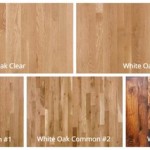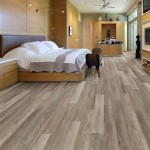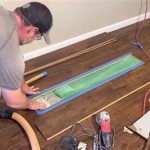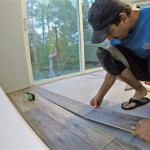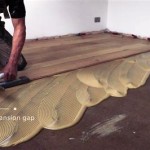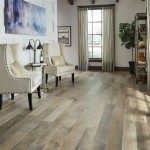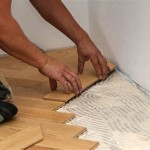Best Knee Pads for Flooring Work: A Comprehensive Guide
Working on flooring projects often necessitates prolonged periods spent kneeling, placing significant strain on the knees. This repetitive pressure can lead to discomfort, pain, and potentially long-term joint damage. Investing in a quality pair of knee pads is therefore crucial for protecting the knees and ensuring comfort and productivity while engaged in flooring work. The market offers a wide array of knee pads, each designed with specific features and materials to cater to various needs and preferences. This article provides a comprehensive overview of the key aspects to consider when selecting the best knee pads for flooring work.
Understanding the Importance of Knee Protection
Flooring work, whether it involves installing hardwood, tile, laminate, or carpeting, typically requires extensive time spent close to the ground. This sustained kneeling position compresses the tissues around the knee joint, restricting blood flow and potentially causing inflammation. Over time, this repetitive stress can contribute to conditions such as bursitis, osteoarthritis, and other chronic knee problems. Wearing appropriate knee pads helps to distribute the pressure more evenly across the knee, reducing the concentration of force on specific points and cushioning the joint against hard surfaces. This protective measure is essential for preventing both immediate discomfort and long-term musculoskeletal issues.
Beyond the physical health benefits, wearing comfortable knee pads can also enhance productivity. When workers are not distracted by knee pain, they can focus more effectively on the task at hand, leading to improved efficiency and higher quality workmanship. Furthermore, prioritizing worker well-being through the provision of adequate protective equipment demonstrates a commitment to safety and can contribute to a more positive and productive work environment.
Key Features to Consider When Choosing Knee Pads
Selecting the right knee pads for flooring work requires careful consideration of several factors, including the type of flooring being installed, the duration of kneeling required, and the individual's body type and preferences. Key features to evaluate include:
Material: Knee pads are typically constructed from various materials, each offering distinct characteristics. Gel-filled knee pads are known for their superior cushioning and shock absorption, making them ideal for extended periods of kneeling on hard surfaces. Foam knee pads provide a lighter and more flexible option, suitable for tasks that require greater mobility. Hybrid knee pads combine gel and foam elements, offering a balance of comfort and flexibility. Hard-shell knee pads offer durable protection against sharp objects and debris, making them suitable for environments with potential hazards. The choice of material should be based on the specific demands of the flooring project and the desired level of protection and comfort.
Design and Ergonomics: The design of the knee pad significantly impacts its comfort and functionality. Articulated knee pads are designed to move with the natural bending motion of the knee, preventing restriction and chafing. Straps and closures should be adjustable to ensure a secure and comfortable fit. Some knee pads feature a high-density foam padding that conforms to the shape of the knee, providing personalized support. Ergonomic designs minimize pressure points and promote proper alignment, reducing the risk of discomfort and injury. Consider knee pads with breathable materials to prevent overheating and moisture buildup, especially in warm environments.
Durability and Longevity: Flooring work can be demanding, exposing knee pads to abrasion, impact, and other forms of wear and tear. Opting for knee pads constructed from durable materials and reinforced stitching ensures that they can withstand the rigors of the job site. Look for knee pads that are resistant to punctures and tears, particularly if working with sharp objects or on uneven surfaces. Regularly inspect knee pads for signs of damage and replace them as needed to maintain optimal protection. Investing in a higher-quality pair of knee pads may represent a greater initial investment, but it can provide long-term cost savings by reducing the frequency of replacements.
Types of Knee Pads Suitable for Flooring Work
The variety of knee pads available caters to different needs and preferences. Understanding the distinctions between the various types is essential for making an informed decision.
Gel Knee Pads: These knee pads are filled with a gel-like substance that conforms to the shape of the knee, providing exceptional cushioning and shock absorption. They are well-suited for extended periods of kneeling on hard surfaces, as they effectively distribute pressure and reduce stress on the joint. Gel knee pads are often heavier and less flexible than other types, but their superior comfort makes them a popular choice for flooring professionals who spend long hours on their knees.
Foam Knee Pads: Foam knee pads are typically lighter and more flexible than gel knee pads, making them suitable for tasks that require greater mobility. They provide a reasonable level of cushioning and protection, but they may not be as effective in absorbing shocks from hard surfaces. Foam knee pads are a good option for flooring work that involves frequent transitions between kneeling and standing.
Hard-Shell Knee Pads: These knee pads feature a rigid outer shell that provides durable protection against sharp objects and debris. They are ideal for environments with potential hazards, such as construction sites or areas with exposed nails or staples. Hard-shell knee pads may not be as comfortable as gel or foam knee pads for extended periods of kneeling, but their superior protection makes them a valuable asset in hazardous work environments.
Knee Rollers: Knee rollers are a specialized type of knee protection that features wheels or rollers on the bottom, allowing the user to move across the floor while remaining in a kneeling position. They can significantly reduce strain on the knees and back by minimizing the need to constantly shift position. Knee rollers are particularly useful for large flooring projects that require extensive movement across the work area. However, they may not be suitable for all types of flooring or work environments.
Hybrid Knee Pads: These knee pads combine the benefits of gel and foam materials, offering a balance of comfort and flexibility. They typically feature a gel core surrounded by a foam layer, providing both cushioning and shock absorption. Hybrid knee pads are a versatile option that can be used for a variety of flooring tasks.
Proper Use and Maintenance of Knee Pads
To maximize the effectiveness and longevity of knee pads, it is essential to use them correctly and maintain them properly. Follow these guidelines:
Proper Fit: Ensure that the knee pads fit snugly and securely around the knees. The straps should be adjusted to prevent slippage or movement during work. Loose-fitting knee pads can compromise protection and may even pose a tripping hazard. Conversely, overly tight straps can restrict blood flow and cause discomfort.
Regular Cleaning: Clean knee pads regularly to remove dirt, debris, and sweat. Use a mild soap and water solution and allow them to air dry completely before storing. Dirty knee pads can harbor bacteria and contribute to skin irritation.
Inspection: Inspect knee pads regularly for signs of damage, such as tears, cracks, or worn straps. Replace damaged knee pads immediately to maintain optimal protection. Pay particular attention to the stitching and closures, as these are common points of failure.
Storage: Store knee pads in a clean, dry place when not in use. Avoid exposing them to extreme temperatures or direct sunlight, as this can degrade the materials over time. Proper storage can extend the lifespan of knee pads and ensure that they are always ready for use.
Rotation: If possible, rotate between two pairs of knee pads to allow each pair to air out and recover between uses. This can help to prolong their lifespan and prevent the buildup of moisture and bacteria.
Choosing the right knee pads for flooring work is a crucial investment in long-term health and productivity. By considering the key features, types, and maintenance practices outlined in this article, individuals can select the knee pads that best suit their needs and ensure a comfortable and safe work environment.

Nocry Non Slip Work Knee Pads For Men And Women With Thick Soft Foam Padding Strong Straps Easy Fix Clips Perfect Flooring Womens Gardening

Klein Tools Heavy Duty Hinged Knee Pad 60491 The Home Depot

Knee Pads For Work Professional Gel Heavy Duty Construction

Klein Tools Heavy Duty Knee Pad Sleeves S M 60615 The Home Depot

Nocry Non Slip Work Knee Pads For Men And Women With Thick Soft Foam Padding Strong Straps Easy Fix Clips Perfect Flooring Womens Gardening

What Are The Best Knee Pads For Work Flooring Materials

Construction Knee Pads For Men Women Ankle Support Tools Heavy Duty Anti Slip Cap Adjustable Straps Thick Gel Foam Cushion Cleaning Flooring And Garden 1 Pair Orange Com

The Best Kneeling Pad For Working On Floor

Alta Pro Wedge Knee Pads With Neoprene Top Straps Industries
Related Posts

